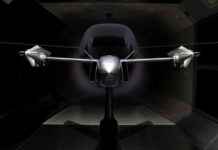Peoria Mayor Jim Ardis planned to open this year’s State of the City speech by thanking Caterpillar Inc. for its longtime commitment to the central Illinois town, declaring "We wouldn’t be Peoria without Caterpillar."
It’s been that way for decades in Peoria and in other company towns across the United States. A major employer provided generations of locals with jobs and gave the cities a central identity, while executives helped keep cultural institutions, Rotary clubs and higher-end housing markets healthy.
Now many of those midsize communities are looking for a new identity as more companies trade their longtime hometowns for major cities with easier access to global markets and to the lifestyle talented young workers want, with public transit, nightlife and trendy restaurants.
Caterpillar’s recent decision to move 300 top headquarters jobs to the Chicago area made Peoria the latest city with a vacuum to fill. In 2014, Decatur, Illinois, lost Archer Daniels Midland to Chicago after 40 years in the town. ConAgra Foods moved 1,000 jobs last year from Omaha to Chicago.
Views from Peoria on Jan. 31, 2017, the day Caterpillar announced it will move its headquarters to the Chicago area from the central Illinois city.
(John J. Kim / Chicago Tribune)
Some companies also are leaving suburban areas for downtowns, though the suburbs are still a popular choice. General Electric is moving its executives from a suburban campus in Fairfield, Connecticut, to downtown Boston, and McDonald’s said last year it will relocate to downtown Chicago from a sprawling headquarters in suburban Oak Brook.
A study by the virtual think tank CityObservatory.org found the number of jobs located within three miles of the city center grew by nearly 2 percent between 2011 and 2014, according to U.S. Census Bureau data. Center city jobs grew slightly faster than those in the periphery in one recent seven-year period, a reversal from much of the past several decades.
"I don’t know that I’d call it a trend yet but it certainly is becoming one," said Tom Murphy, a former Pittsburgh mayor and senior resident fellow at the Urban Land Institute. "Maybe for the first time in history, rather than having people follow where jobs are … we’re beginning to see jobs following people instead."
By a 2-to-1 margin, young college graduates are now choosing a place to live first, then finding a job, said Joe Cortright, director of CityObservatory.org.
Cat’s new HQ goal: Change culture Robert Reed Oslobet
To change a corporate culture, change the location of the corporate headquarters.
In a nutshell, that seems to be the goal of James Umpleby, Caterpillar’s recently named CEO, who is leading the heavy construction and equipment maker’s headquarters relocation from its longtime home in Peoria to…
To change a corporate culture, change the location of the corporate headquarters.
In a nutshell, that seems to be the goal of James Umpleby, Caterpillar’s recently named CEO, who is leading the heavy construction and equipment maker’s headquarters relocation from its longtime home in Peoria to…
(Robert Reed)
For companies recruiting top talent, "the biggest competitive advantage is to be in the city," Cortright said.
The change is adding to the divide between urban and smaller communities in the U.S., especially in the Midwest, which is beset with sagging manufacturing industries.
"We joke about that there’s the great state of Chicago, and then there’s the rest of Illinois," said Bishop Harold Dawson Jr., a lifelong Peoria resident and pastor of New Life Christian Church.
Like many locals, Dawson can rattle off a list of relatives whose livelihoods in Peoria have depended on Caterpillar. The company known as CAT for short established its first plant in Peoria in 1909 and employs more than 12,000 workers in the area, even after several layoffs.
The city of about 110,000 has been trying to breathe more life into its downtown and a scenic stretch along the Illinois River. But while new restaurants, coffee shops and apartments are opening, Ardis acknowledged few people would call the area "dynamic." And parts of the city’s core are seeing growing poverty.
The headquarters move has been a blow to the city’s collective morale.
"There is emotion around" the decision, said Jeff Griffin, president of the Peoria Area Chamber. "Peoria is not unique in that tragedy across the country."
In Peoria, Caterpillar’s move feels like ‘kick in the gut’ Greg Trotter
For almost 60 years, Caterpillar executives have dined regularly at Jim’s Steakhouse, an elegant, dimly lit restaurant in downtown Peoria. A small toy bulldozer signed by a former executive hangs on the wall.
“We’ve served every CEO throughout the years. And now they’re going to be eating at Gibson’s”…
For almost 60 years, Caterpillar executives have dined regularly at Jim’s Steakhouse, an elegant, dimly lit restaurant in downtown Peoria. A small toy bulldozer signed by a former executive hangs on the wall.
“We’ve served every CEO throughout the years. And now they’re going to be eating at Gibson’s”…
(Greg Trotter)
Griffin said he and his counterpart in Omaha talked recently about the importance of diversifying the local economy — relying on small business rather than large corporations.
"Part of the big challenge is leadership needs to recognize the rules have changed," Murphy said. "They need to think about how they build their cities and the amenities they offer, and be really clear about what their competitive advantages are today, not what they were 100 years ago."
A city should perhaps think about spending on public transit rather than highways, he said.
Improving the atmosphere of downtown seems to be helping some midsize cities recoup from the loss of major businesses, urban experts say.
In Greenville, South Carolina, where the decline of the textile industry left a huge gap in the economy, leadership arranged to remove a four-lane bridge that obstructed the view of a scenic waterfall, and added trees and cafes and sidewalks. A downtown that was once "dead" is now "beautiful and hugely successful," Murphy said. In addition to drawing tourists, the city has a booming advanced manufacturing industry, anchored by companies such as BMW.
But other places, such as Decatur, are struggling to find a new identity. The city has the second-highest unemployment rate in Illinois, and Moody’s Analytics warns the lack of jobs could push the city back into recession.
Across the Midwest and Northeast in particular, a number of midsize cities are facing "big challenges," Cortright said.
"What do we do with the Peorias?" he added. "I don’t’ think we know what the answer to that is."
Peoria has a growing health care industry and is home to other companies such as Maui Jim sunglasses and Bump Box, a monthly delivery of skincare and other products for pregnant women.
Ardis said the city just has to find more.
"We’re not just going to roll over and play dead," he said.
Our editors found this article on this site using Google and regenerated it for our readers.















